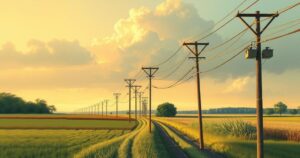Understanding Australia’s Active Cyclone Season

The current cyclone season in Australia has been notably active, featuring several severe storms such as Cyclone Sean, Cyclone Zelia, Cyclone Alfred, and Ex-Tropical Cyclone Errol. Cyclones generally occur between November and April, with precise environmental conditions necessary for their formation. Proper safety measures are essential for those living in affected areas.
This cyclone season has proved exceptionally active, impacting various Australian regions. Severe Tropical Cyclone Sean brought unprecedented rainfall and winds to the Pilbara coast in January. In February, Severe Tropical Cyclone Zelia caused anxiety in northern Western Australia, while Tropical Cyclone Alfred wreaked havoc in Queensland and New South Wales the following month. In an unusual turn, Ex-Tropical Cyclone Errol, originally a Category 4 system at sea, transitioned into a tropical low as it crossed the Kimberley region in April.
Cyclones typically form between November and April in northern Australia. The average historical count stands at eleven, with current assessments predicting about four to make landfall this season. They primarily form north of Exmouth along the WA coast, across the Top End, and north of Brisbane on the east coast—but they can occasionally reach further south. In the southern hemisphere, cyclones spin clockwise, unlike their northern hemisphere counterparts, which rotate counter-clockwise and are referred to as typhoons or hurricanes.
To develop, cyclones require very specific conditions. Firstly, ocean temperatures must reach at least 26.5 °C, which is why tropical waters are prime locations. As water evaporates, it generates clouds that begin to spin given low air pressure. The air needs to stay humid, providing the energy necessary for cyclones to speed up. Winds must exceed 119 km/h for a system to be classified as a cyclone, with the calm eye of the cyclone encompassing about 40 km.
Cyclones can unleash significant energy over the ocean, resulting in dangerous surges that threaten coastal communities and maritime activities. However, their potency diminishes when they move over land, encounter cooler oceans, or face unfavorable conditions. On average, cyclones last around a week.
Naming conventions for cyclones are managed by the Bureau of Meteorology, which follows an alphabetical list alternating between male and female names. Names of severe cyclones deemed especially disruptive are retired permanently, a notable example being Cyclone Tracy.
Strength categories help gauge cyclone risks, ranging from Category 1 to Category 5. Category 1 cyclones, considered the least powerful, can reach wind speeds of up to 125 km/h, while Category 5 systems are exceedingly dangerous, exceeding 280 km/h and generating more than 5.5-meter ocean swells with the potential to flatten structures completely. Categories 2, 3, and 4 provide gradations of wind speed, ocean conditions, and associated damage.
Residents in cyclone-risk areas must prepare adequately. Key precautions include securing windows, tethering loose debris, shutting off utilities, and heeding evacuation orders. While awareness is critical, having a solid safety plan can mitigate the impact of these natural disasters.
In summary, this cyclone season has been marked by intense activity across Australia, significantly affecting several regions. Understanding how cyclones form, their categorization, and the preparation needed for such events is vital for community safety. As cyclone threats remain real, staying informed through reliable sources can save lives and property.
Original Source: particle.scitech.org.au







